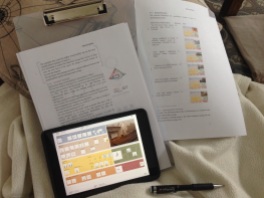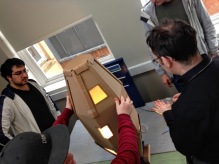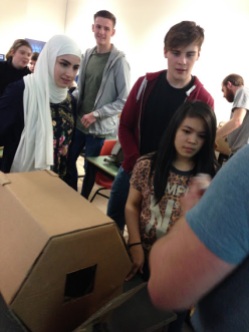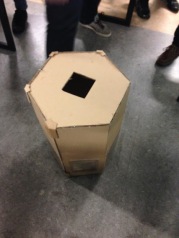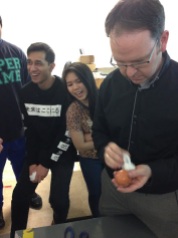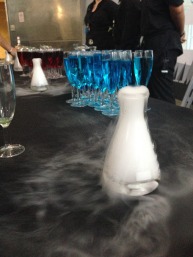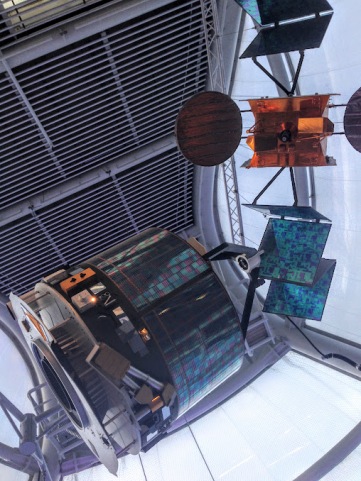 What an honor to be part of the day a young scholar gets her wings, so to speak, by earning her PhD! Last week I travelled to Lisbon to attend the viva (i.e., PhD defense) of Maria Alexandre Bacharel Oliveira Carreira. I had met with Maria on both of my two prior visits to the Instituto Superior Técnico at the Universidade de Lisboa. I really enjoyed watching her work unfold.
What an honor to be part of the day a young scholar gets her wings, so to speak, by earning her PhD! Last week I travelled to Lisbon to attend the viva (i.e., PhD defense) of Maria Alexandre Bacharel Oliveira Carreira. I had met with Maria on both of my two prior visits to the Instituto Superior Técnico at the Universidade de Lisboa. I really enjoyed watching her work unfold.
This time, I was a member of her evaluation panel. I curled up with her thesis each night while I was in Brussels. Preparing for this panel event took many hours for me–but it took five years for Maria! During that time Maria gave birth to two children, but that didn’t slow her down much. She kept plugging away at her research.
She conducted extensive analysis of spaces that support teaching and learning. The title of her dissertation (which in Europe is called a thesis) is In-between Formality and Informality: Learning Spaces in University Context. The European term “viva voice” (meaning “live voice”) is so much nicer than the term “dissertation defense” used in the States.
 After 2.5 hours of presenting her work and answering questions–posed by the panel of 6 experts (I myself had 40 minutes to talk about her work and ask questions of her)–Maria and her many family members and friends who had come to the event left the room. The panel discussed the merits of the work, deliberated, then invited Maria and the crowd back into the presentation room to pronounce her a PhD with distinction. We all went for a celebratory luncheon in the afternoon.
After 2.5 hours of presenting her work and answering questions–posed by the panel of 6 experts (I myself had 40 minutes to talk about her work and ask questions of her)–Maria and her many family members and friends who had come to the event left the room. The panel discussed the merits of the work, deliberated, then invited Maria and the crowd back into the presentation room to pronounce her a PhD with distinction. We all went for a celebratory luncheon in the afternoon.
Once Maria has submitted the final version of her thesis, I’ll try to post a link. In the meantime, you may be interested to read two of the articles I have written that have to do with topics in her thesis.
The first is about how the design of school buildings can enhance learning and help us achieve environmental sustainability:
Chance, S. and Cole, J. T. (2014) “Enhancing Building Performance and Environmental Learning: A Case Study of Virginia Beach Public Schools ” City Public Schools. Book chapter from the book entitled “Marketing the green school: form, function and the future.”
The second is about university buildings. It also discusses how buildings can promote learning, by serving as examples, modeling values, and getting people engaged. It’s about environmental sustainability and how LEED has become an example of organizational learning (i.e., a big organization that effectively learns from past experience, using it to improve future performance):
Chance, S. (2012) Planning for Environmental Sustainability : Learning from LEED and the USGBC , Planning for Higher Education, Vol. 41, No. 1, Oct-Dec, 2012.

